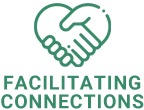
At the heights of the pandemic, my friends and I got together to prepare brown bag meals for a local homeless shelter in the D.C. area. On our way to delivering the meals, we passed through a low-income community and the local highschool there. I was appalled at the condition in which the school grounds were. Though I had known for a very long time that school funding is based on property taxes collected from the community, I had only recently understood how it impacted the resources available to schools located in low-income areas.
In a quest to understand the factors influencing poor education in low-income minority communities, I searched online and connected with people offline. That’s when it struck me that the problem of low-quality education in economically-challenged communities was only the tip of the iceberg called incarceration.
Let me walk you through an unbelievable tale of drugs, compulsory minimum sentencing, and poor opportunities—the real demon behind the widening economic and racial divide in America.
A BRIEF HISTORY—REVERSING A BIG MISTAKE
Between the wee end of the 1960s and the early 1990s, violent crimes in America increased almost two-fold, cresting in 1991. Drug related crimes were rampant at the time and the need of the hour was increased policing. It was into this backdrop that the Violent Crime Control and Law Enforcement Act of 1994 (popularly known as the 1994 crime bill) was sponsored by Joe Biden. The bill made minimum sentences mandatory and cut off access to Pell grants for education to incarcerated individuals.
While the crime bill alone may not have caused too much harm, when combined with the Anti-Drug Abuse Act of 1986, it became hugely problematic, exacerbating drug-related incarcerations within minority communities. According to the 1986 act, a person found to possess 5 grams of crack cocaine was sentenced to five-years while it would take possession of 500 grams of powder cocaine to attract the same sentence. Since crack cocaine was much cheaper than powder cocaine, and therefore consumed largely by low-income minority communities, the law effectively penalized in greater numbers the members of the African-American community. Though the crack to powder cocaine ratio was later reduced from 1:100 to 1:18 during the Obama-Biden Administration through the Fair Sentencing Act of 2010, the damage had already been done.
What started with denied access to federal Pell Grants soon overflowed into state-level prohibitions on access to tuition assistance programs for incarcerated individuals. Between the years of 1995 and 1996, the postsecondary prison education programs available in New York dwindled from 25 to four. Incarcerated individuals had to rely on privately funded donation programs and Second Chance Pell Experimental Sites Initiative involving the temporary reinstatement of access to educational financial aid. However, these scanty and under-funded programs had very low acceptance rates (33% in 2014). Thus, the opportunity for education and a better life were significantly low for incarcerated individuals.
With average incomes 41% lower than their peers even before the time they were incarcerated, and extremely low prison wages, incarcerated individuals were barely able to cover their medical care and personal expenses. Without external aid, there was no way that prisoners could afford an education. Though 64% of the people incarcerated in state and federal prisons were eligible for postsecondary prison education support, only 9% were able to complete college courses while incarcerated in 2014.
Understanding that Federal and State education programs held several fiscal benefits and were necessary for supporting post secondary education among the incarcerated, in 2020, the Congress restored access to Pell Grants. The bill will be brought to effect on July 1, 2023.
Several states are also taking active steps to enhance access to college education in prison. Incarcerated students were given access to Michigan’s TAP in 2019. By 2020, New Jersey joined D.C. and 17 other states in providing financial educational aid without barriers for incarcerated students. According to research done by Ruth Delaney and Juan Martinez-Hill of the Vera Institute of Justice, once the Pell program is restored, more states will lift barriers that preclude people in the criminal justice system from accessing state financial aid.
THE NAACP REPORT
In a recently released NAACP report titled Misplaced Priorities, some grave socio-economic mistakes were exposed. Not only was school funding allocation falling, forcing schools to cut corners, state spending on incarceration activities was at an all time high.
The organization detected a persistent shift in spending from the public education system to the criminal justice system. According to the report, higher education funding has grown by merely 21 percent between 1987 and 2007. However, the funds allocated for corrections has increased by 127 percent!
It is alarming that a greater proportion of the public funds are being used to incarcerate people than on improving public education. By virtue of this fact, the lower the number of minorities that graduate from high school, the greater the number that fall into the deep well of incarceration. Researchers have observed that increased incarceration rates lead to destabilization of minority communities. This vicious cycle then spirals through generations, triggering systemic poverty and poor choices within minority communities.
The NAACP study spanned six cities (Houston, Indianapolis, New York, Los Angeles, Philadelphia, Jackson) revealing some troubling characteristics. In Houston, Texas, it was found that the city had diverted $175 million of taxpayer dollars to incarcerate people from merely 10 out of its 75 neighborhoods. In Indianapolis, Indiana, a meagre 16% of the neighborhoods in the city produced 41% of prison inmates. New York, Los Angeles, and Philadelphia also showed similar trends. In Jackson, Mississippi, over $25 million in taxpayer funds were utilized to incarcerate people from just two zip codes. In all the cities studied, a small proportion of neighborhoods were churning out a majority of people in the prison system.
The NAACP report contained recommendations to address the systemic feeder belt that was overwhelming the criminal justice system. They included:
- Improvements to sentencing and drug policies
- Organizing a blue-ribbon commission to review the current criminal justice system
- Divert funds to the education system from the savings from the commission
Ben Jealous, ex-CEO of NAACP, opined that a poor drug addict needs the same support as a rich drug addict—rehab. He mentioned that sending addicts to rehabs not only cost less but also reduced the strain on the criminal justice system. He also talked about how pouring funds into the prison system was done at the expense of funds for education.
Following the release of the NAACP report, several key policy makers such as the president of Americans for Tax Reform, Grover Norquist, former speaker Newt Gingrich, and president of the California Correctional Peace Officers Association, Mike Jimenez publicly declared their support. Jimenez referred to the incarceration of drug addicts and mentally ill offenders as an insanity that had to stop.
WHY DO PRISONERS LEAVE SCHOOL EARLY?
The reasons for school dropouts among the incarcerated are numerous and complexly interconnected. In a national study conducted on incarcerated people who did not complete high school, it was discovered that 59% had a speech disability and 69% were hindered by a learning disability. When coupled with the socio-economic inequality and lack of educational opportunities they experience, these forces ensure that low-income students don’t receive the help they need to overcome their disabilities. Since most schools in low-income areas are poorly funded and have minimal means to provide quality supplies, infrastructure or teachers, this further exacerbates the problem.
A Prison Policy study done on incarcerated individuals before they entered prison showed that they earned more than 40% less than other people of their age. Another study conducted by the American Psychological Association in 2013 showed psychological links between living in poverty and poor performance in school.
To top these disadvantages, often low-income minority students have to provide financial assistance to their struggling families. Many take after-school jobs that leave them very limited time for studies. Others who are unable to juggle the demands of work and school simply choose to drop out. In a study conducted by Urban Institute in 2015, working adolescents and young adults contribute to nearly 22% of household income while about 10% meet more than 50%.
WHAT HAPPENS TO PRISONERS AFTER THEY LEAVE SCHOOL?
Once low-income students drop out of school, their chances of being incarcerated increase manifold. Due to their lack of work experience and academic skills, they are often incapable of finding employment at well-paying institutions. Therefore their access to steady employment further declines.
Since being a highschool dropout reduces an individual’s income by 50% when compared to high school graduates, often young adults belonging to low-income families fall into and continue in poverty for the rest of their lives, passing on the constraints of opportunities to the next generation. With no better means to move forward, the relationship between poverty and imprisonment for these people is sealed as is evident from a study conducted at the Institute for Policy Studies in 2015. These complex and intertwined forces increase the chances of highschool dropouts being imprisoned by 47 times when compared with similar-aged individuals holding a four-year college degree.
THE IMPACT OF INCARCERATION ON MINORITY COMMUNITIES
Minority communities are heavily impacted by the cyclic perpetuation of poverty that leads to poor education which ultimately results in incarceration.
Since most minority communities are situated in poor areas with low property taxes, the funding allocated to schooling in those neighborhoods through the zone-based school funding system is limited. Thus access to quality education becomes highly racialized.
In a study tracking neighborhoods by ethnicity, it was observed that white and Asian neighborhoods have a greater average income when compared to other races. It is noteworthy that the average income within white neighborhoods in 2013 was 13 times more than the average wealth in black communities.
Another factor that places minority students at a disadvantage is their increased likelihood of being held back, suspended, or even expelled from school. In an educational report released in 2003, it was observed that ethnicity had a marked impact on education before incarceration. According to the study, the percentage of people who had not completed highschool or GED ethnicity-wise was as follows—27% white, 44% black, and 53% hispanic.
IMPACT OF PARENTAL INCARCERATION ON CHILDREN
The United States is one of the greatest superpowers in the world today, and yet it has the highest rate of incarceration in the world with 700 prisoners per 100,000 residents. Following closely behind are the Soviet Republic of Turkmenistan, El Savador, and Cuba. The brunt of these elevated incarceration rates in America have been borne primarily by its minority population.
Many studies have been conducted across criminal justice, health, sociology, economics and more to determine the impact of parental incarceration on children. The studies show that incarceration directly influences the cognitive and non-cognitive development of children resulting in poor performance at school.
Today, one out of ten African-American students have at least one of their parents in prison. 25% of children have parents who are actively incarcerated or have been incarcerated before. The trauma of having a parent in prison has deep-rooted effects on the psyche of a child, widening the racial achievement gap.
Every day, around 10% of black children experience the agony of having a parent locked up. This is four times more than the prevalent incarceration rate in the 1980s. It is estimated that 25% of black children would have experienced the incarceration of their parent/s by age 14 when compared with 4% of white children. Out of the parents incarcerated, a third are convicted for violent crimes, another third are imprisoned for drug-related crimes, and the remainder for non-violent crimes such as technical violations.
In the study, researchers controlled for factors like race, IQ, home environment, and poverty to determine the effect of incarceration of parents on children. They discovered that with all the controls in place, such children had a greater likelihood of dropping out of school than other children with non-incarcerated parents. It was also found that black boys in their early teens were 25% more likely to quit school if their mother was imprisoned. Similarly, children with incarcerated fathers often did not complete high school.
It was further observed that children with parents in jail had a greater likelihood to develop learning disabilities. Such children are 48% more likely to exhibit attention deficit hyperactivity disorder (ADHD) when compared with children of non-incarcerated parents. Also, they have 23% more likelihood to have developmental delays. A shocking discovery was that 72% were likely to suffer from PTSD and 51% from anxiety if their father had been incarcerated. Children with their father’s in prison also showed elevated levels of cholesterol as well as higher incidences of asthma and migraines. Among girl children, the likelihood for weight-related struggles was also seen.
The combined impact of loss of income, support, and the psychological and emotional stress of incarceration were together found to be the root cause of the negative outcomes observed in the study. The incarceration of minorities for drug-related crimes and the resultant low performance of children in school can only be solved by ending mass incarceration.
WHY IS EDUCATION IMPORTANT TO PRISONERS?
During a study done in New York State’s Sing Sing maximum security correctional facility, a random sample of 220 males were taken to determine why the school dropouts (79% of the prison population) and school graduates (21% of the population) attended school in prison. Out of the sample population, 85% of the school dropouts attended school with more than 50% getting their high school equivalency diploma in prison. Around one-third of them went on to attend college classes to varying degrees during their imprisonment. While the school graduates primarily took college programs in prison, vocational training was a popular choice for school dropouts and graduates.
Nearly one-fifth of the prisoner’s sentence was spent enrolled in academic or vocational programs irrespective of ethnicity. Their primary motivation for choosing to get an education in prison was to become better people, clear the GED, and increase their chances of employment.
BENEFITS OF EDUCATING PRISONERS
The benefits of providing postsecondary education to prisoners are numerous. When compared to the general population, incarcerated individuals have lower than average education levels. This when combined with their criminal record drastically reduces their chances of gainful employment once released. However, individuals who complete some form of postsecondary education reduce their chances of reincarceration by 48% and increase their chances of employment by 12%.
Educating prisoners also makes economic sense. For every $1 spent on prison education programs, $4 to $5 are saved on reincarceration costs. Also those individuals who complete a college course while incarcerated stand to earn more than those without a college education.
Let’s review the benefits in detail.
Recidivism
In studies conducted by the Bureau of Justice Statistics, recidivism was found to be high among released convicts. One of the study’s followed 404,638 prisoners across 30 states after their release from prison. They found that around 2/3rd of them were rearrested within 3 years and more than 75% of them were rearrested within 5 years. More than half of the arrests were made during their first year of release.
However the study showed a reduction in rates of recidivism for prisoners who participated in postsecondary prison education programs by 43%. It was observed that the higher the level of education obtained in prison, the lower the chances of recidivism. Recidivism was found to be at 14% for prisoners with an associate degree, 5.6% among those who earned a bachelor’s degree, and 0% for those who had received a master’s degree.
Employment
There are more employment opportunities with better profiles and pay for those who go through a prison education program. They generally experience an easier transition into society and find gainful employment when released.
Cost-effective
According to a study conducted by the Department of Policy Studies at the University of California, Los Angeles, it was found that only 350 crimes could be prevented with an investment of $1 million into the criminal justice system whereas the same investment in prison education programs could effectively prevent more than 600 crimes. In another study, every $1 investment in post secondary education in prison was found to save $4 to $5 of taxpayer funds in reincarceration costs.
Internal Benefits
Prison education has profound benefits for the incarcerated who choose that path, and this holds true even for those who are in prison for life. Not only does it substantially reduce violence and infractions, but it also breaks down racial and ethnic barriers that cause tensions and rifts within the inmates. Among prisoners in Indiana prison, those who were enrolled in college courses committed 75% fewer infractions than those who were not engaged in a prison education program. Thus, prison education serves to improve self-esteem in the incarcerated and also betters their relationships with other inmates and prison staff.
Generational Benefits
Incarcerated individuals who go through a prison education program are better able to provide for their children once released and are also better equipped to guide them through their education. Prisoners who have completed a college course are mostly likely to insist on their children also attending college, thereby bridging the divide between low education and incarceration. Ultimately, this is a powerful tool for breaking free from the vicious cycle of inequality, poverty and incarceration that passes on from generation to generation.
FINAL THOUGHTS
Engaging in postsecondary prison education programs comes with fiscal benefits and many survivors have shared their inspiring stories of transformation. Over and above these benefits, prison education also helps reduce the racial divide especially in low-income Black and Latinx communities where students are sucked into the school-to-prison feeder system. Since American prisons are overwhelmingly filled with people from low-income communities, once they complete prison education programs, their role in preventing further incarcerations through encouraging friends and family to pursue an education is of irrefutable importance.




